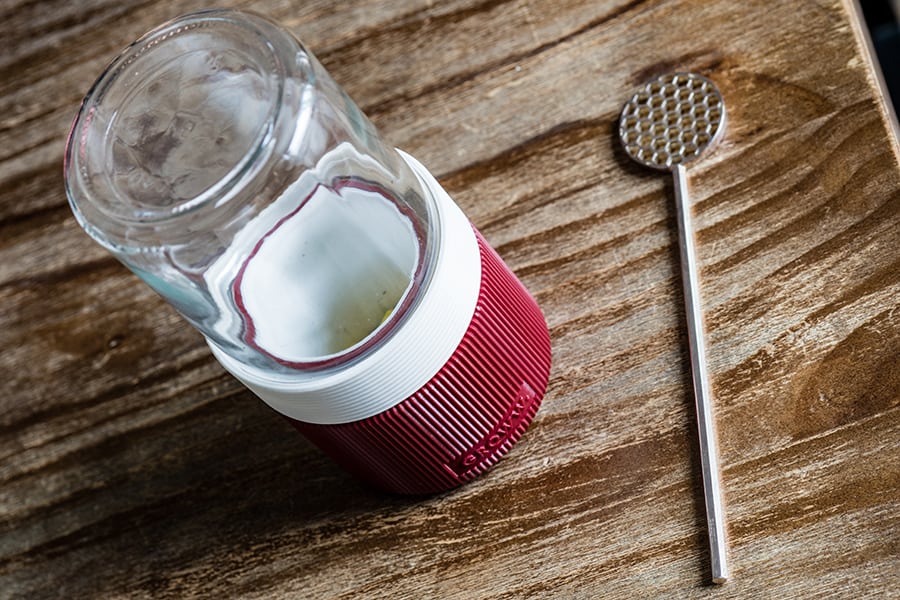
Online retail platform Womb features an array of fashion accessories, homeware and activewear with sustainable and ethical design – and we asked the founders how it came about
If you’re a conscious consumer that shops at vintage stores, buys vegan fashion lusts after products from The Slow Mode and Ril Creed, then you’ve probably already heard of Womb – a rising online retail platform in Hong Kong that features different independent brands selling ethical products, including homeware and fashion accessories. We chatted with the founders of the site – Kasia Galak and Maria Grzywacz – about veganism, sustainability and why it’s important to look into production and consumption while shopping for our home and wardrobe.
An interview with the founders of Womb
Hi, Maria and Kasia. Thanks for taking the time to chat with us. Tell us a little bit about how Womb got started?
Maria: Kasia and I started Womb in July 2017 after we met in Beijing, more than two years ago. While we like working with people in the creative industry, we also wanted to do something that corresponds to our personal values. Kasia is vegan and I’m vegetarian, so caring about what we put in our mouths led us further into researching more about conscious consumption, how things are made and where they come from. Womb is a mix of what we are passionate about – creative process and creative practices – but with a sustainable angle.
Kasia: We also like to think about it as sort of like an educator and an active participant of the debate here in Hong Kong regarding sustainability, alternatives to production.

I’ve got to ask, why did you choose to name the site Womb?
M: We wanted the name to have a female element because we are two female founders, and a womb also symbolises a very safe place. We bring new designers to a place where we can nurture them and let them grow, as well as to facilitate exchange between designers. So what we do essentially is like a womb.
K: It’s also a little bit controversial. When we introduce the company and say that it’s called Womb, people would associate it very biologically with the uterus. But after actually thinking about it for a second, everyone really likes it. It’s memorable and provocative. We want to see what it can mean metaphorically for people who are involved in the project.
You focus on three main things, namely ethics, sustainability and veganism. Why is that?
M: We believe that in order to be sustainable, you cannot exploit another living being to possess your material. So for us, if something isn’t vegan, it’s not sustainable. We’re trying to explain to people that killing animals in order to have your bags or wallets is just not working in the longer run. Not when we have technology that allows us to different innovative techniques and other materials. And I think we should be pursuing that.
K: Also, people might say we have been using leather since we were living in caves and we should keep doing that. You could maybe justify using leather in Scandinavia, but no one really needs leather jackets or shoes in Hong Kong. We’re in a climate that just doesn’t really call for it.

What kinds of brands does Womb feature on the site?
K: Now we have around twenty designers. Most of our designers are from Poland or they’re of Polish origins but maybe they don’t work there. They work in the UK or Germany. And I think right now we have five designers from Hong Kong.
M: In terms of fashion designers, Pat Guzik’s collections are very inspired by Hong Kong and kind of edgy for the European standard. For ceramic brands, there is Zaczyn which works with one of the oldest porcelain factories in Poland. They use old porcelain that were crushed to create new items, so it implements recycling in porcelain production. Another upcycler is Jolene Jolene which uses old plastic bags to produce cardholders and other small lifestyle items.
K: Also, the clothing brand Cosmos Studio came up with this dyeing technique where they don’t dye the whole garment but instead just imprint the colour onto the threads. This process is patented by one of the stakeholders and it’s called GiDalve. Using that, they’re able to use just 5 per cent of water that will normally be used in the production of a single shirt.

Who are some of your favourite designers?
M: I really appreciate what Magdalena Tekieli is doing, she is the designer behind sketchbooks, notebooks, planners that are made of 100 per cent recycled paper. I know stationary is still an item, it would be more eco-friendly to have everything digitalised. But what she does is extremely important. This paper would have landed in a landfill or the ocean, but she’s sourcing old papers in order to produce new item. I think that’s a really good statement.
K: I can’t come up with just one name! It’s like choosing among siblings or kids. All of them have done their absolute best.

How do you choose the brands and know that they’re great at what they’re doing?
K: Meeting the designers personally, going to their studios and really seeing first-hand what the practice looks like! Studio is also a production site, it’s relatively easy to track the process. Because it’s either these guys doing it, or they work with factories that we also can visit. They’ll show us one way or another how the production is being overseen.
M: What we’re trying to do is to reverse the consumption model and the consumption mind that is in Hong Kong, which is very often buying more and buying more expensive products. But sometimes you have to analyse the item you’re buying. Just because it has a price tag or a name tag, it doesn’t necessarily justify the ethics or the quality of it.
Shop Womb online

